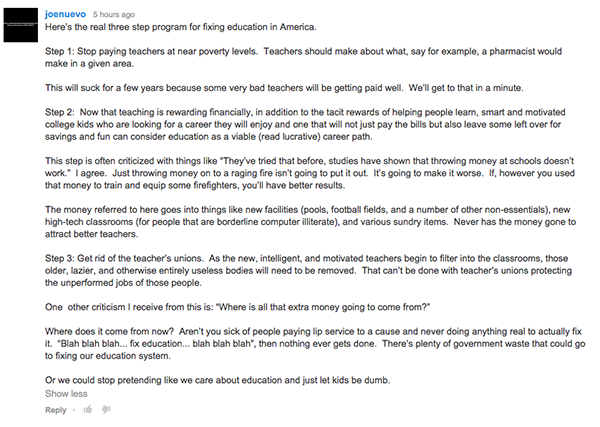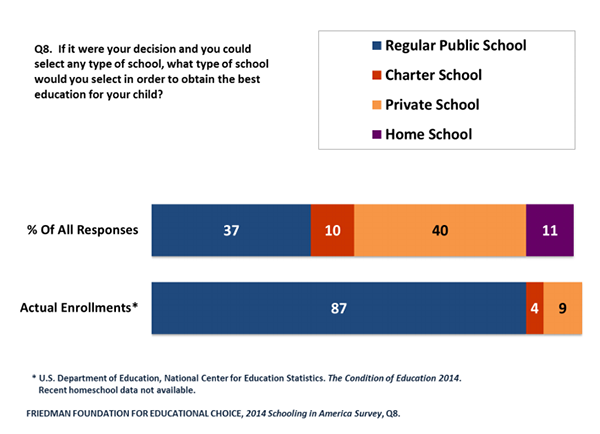Friday Freakout: Which Three-Step Plan is Best for American Education?
The American Enterprise Institute released a video this week featuring Michael Q. McShane promoting his book which outlines his three-step plan to an American education marketplace that would meet the needs of more children.
Today’s freakout comes from joenuevo, who has a different three-step solution.

It’s important to note that we haven’t highlighted joenuevo’s comment because he’s out of order. He’s certainly not. We gave him some air because perhaps these are things to try. Who are we to say they wouldn’t work to improve American education?
What hasn’t been communicated by school choice advocates to people of joenuevo’s mindset is that we aren’t linking arms to block the testing of innovative solutions like those, neither are we endorsing them. We are actually making three statements of our own:
1. Short-term: While struggling students wait for reforms such as joenuevo’s to happen in their district public schools, why not give them control of their funds to choose schools that are a better fit right now?
2. Long-term: School choice doesn’t aim to dictate how leaders run their schools or how educators are allowed to teach. If the funding mechanism of our public education system simply were to shift from funding schools directly to funding them indirectly through the choices of students, the education powers that be would have more incentive to make reforms like joenuevo’s happen quickly. Chances are many of America’s consumers of education – parents and students – want them.
A 2014 Education Next survey of parents found:
- 62 percent think teachers are underpaid
And a 2010 TIME poll of American adults found:
- 76 percent agree on some level with this statement: “Many of the smartest people in society don’t go into teaching because being a teacher doesn’t pay enough.”
To sum up, instead of changing an education system based on the choices of a few bureaucrats, let’s let it change based on the choices of the millions of families who actually have to experience it.
3. Joenuevo points out the issue of funding, and rightly so. We agree government should continue to optimize efficiency to find savings in other areas. Although, right now, education is not excluded as an area where government waste occurs.
Just look at the fiscal effect when a state puts an optional school choice program on the roster. Every study has shown choice programs save money. Most often those savings are reinvested in public schools or captured by the state and spent on other government services. A new report to be released next Tuesday, The School Voucher Audit, shows just how much programs have saved with full data tables and transparent calculations.
That’s right. School choice programs can actually be a way to increase funding for students who remain in traditional public schools.
That said, just because school choice advocates point out how much we spend on education doesn’t mean we assume America is spending too much. We do it to say: Perhaps America isn’t spending its education funds in the most effective ways. It’s entirely possible we should spend more money per-pupil to get optimal education for more kids. The critical issue we must sort out first, however, is this:

As the system stands now, most people aren’t able to experience education in the ways they think are best for their children. Clearly there are existing options that could be helping, but the current funding mechanism of our system results in those options going unused by the struggling students who want them. If instead our system fully utilized all of those options, the number of struggling students surely would go down. Imagine how much easier it would be to determine the financial needs of public school students then.




